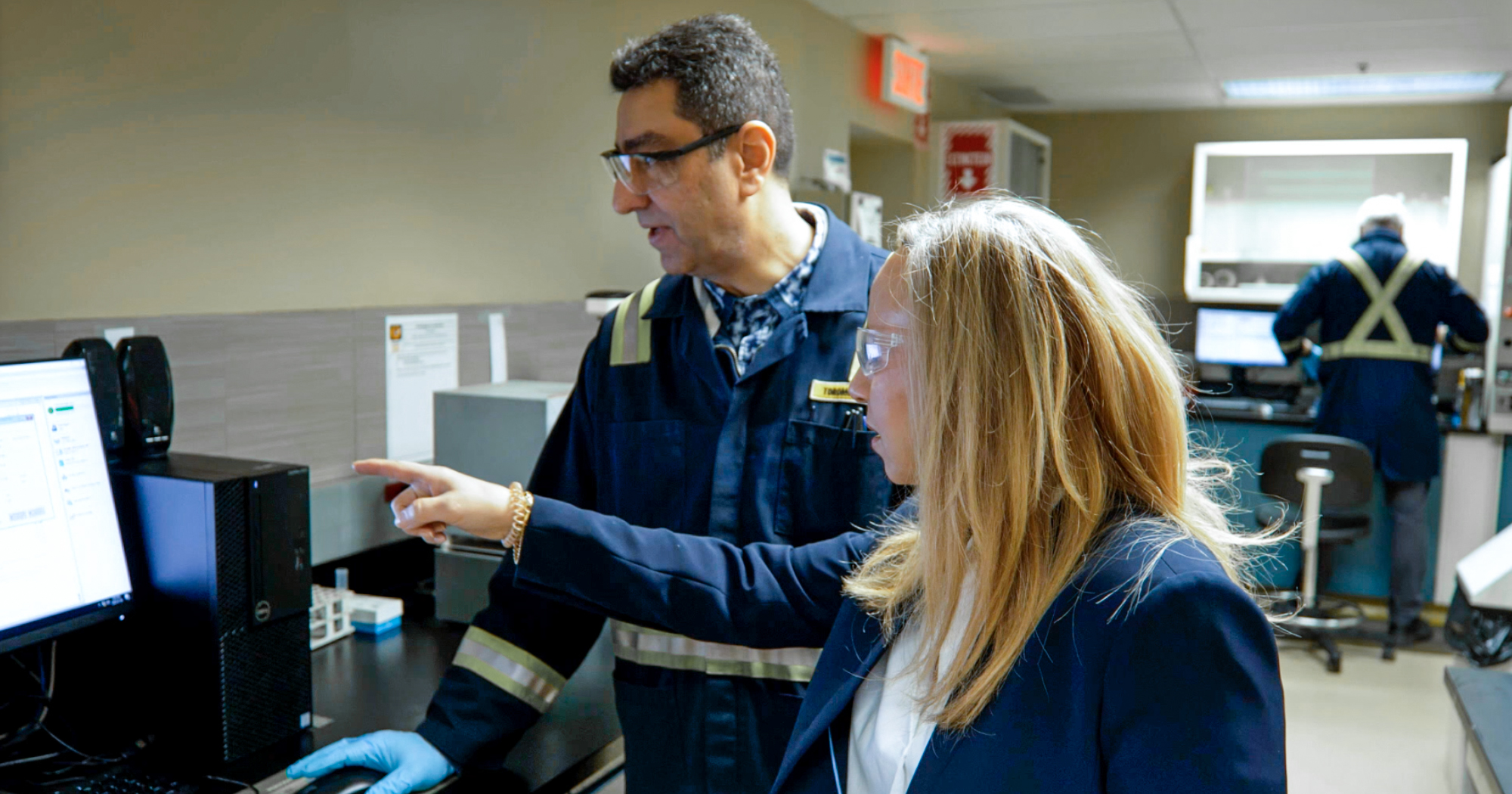
The ability to interpret the results of fluid analysis is vital to guiding significant decisions about preventive maintenance activities.
Just as a blood test can deliver life-saving information, heavy equipment fluid analysis is about keeping equipment in good health. One of our laboratory experts -- Laziz Chabane -- agreed to answer a few questions about her role and how she keeps machines running at their peak.
Laziz, can you tell us about your role on the fluid analysis team at Toromont?
I’m a condition monitoring analyst; the analysis interpretation component is part of our team, mainly for samples from the Canadian Malartic Mine. I also interpret diesel fuel samples and respond to various customer requests.
How do you proceed when you receive the results? What are the main steps in interpreting the results of an analysis?
First, we make a general observation. We associate the results with the number of hours of the machine. We observe the capacity and the quantity of oil in the compartment, the type of industry, the working environment of the equipment, etc. The analysis results are compared with the reference information. We also look at previous oil analysis results and review historical sample data, then identify trends.
We must know the lower and upper limits for each of the tests, as these vary depending on the type of compartment.
We examine the data by first asking the following questions:
1- Has the wear data increased?
2- Is the oil contaminated?
3- Is the correct oil used for this equipment?
4- Is the oil degraded?
Once the analysis is completed, we proceed with the conclusion of the analysis and we provide detailed recommendations. A color-coding system is used to indicate conditions such as:
Green – Normal state, no action required
Yellow – Abnormal condition, action required
Red – Critical condition, immediate action required
The report is written in the client's language of communication. It is important to consider all available data and information to make the best possible interpretation.
How is an oil analysis report interpreted and what importance should the customer place on it?
The properties measured can be classified according to the condition of the oil, contamination, degradation and wear: Viscosity, TAN, TBN, Water, Oil cleanliness, ISO code, Viscosity index, PQI , additives, Silicon, sodium, potassium, wear elements.
The client must read the analysis report carefully, because he will be able to make informed decisions with the recommendations made. He can decide to leave or change the oil, to open a work order for a maintenance follow-up. He can also decide to keep the data for future monitoring or to compare with other similar equipment.
What is essential when interpreting a fluid analysis?
Once the analysis is complete, it is important to review the report and interpret the accompanying data to determine if action is needed. Our role is to detect anomalies preventively in order to anticipate problems, breakages and disasters, to allow repairs before failure, which reduces costs and repair time. The report does not always identify specific issues, but it does provide a starting point for analysis.
What challenges and issues do you or your team face in your work?
As an analyst, I constantly have to adapt to changes in fluids, components and technology. It is necessary to know the specificities of the customers and their requests. We work with clients from various industries (mining, construction, energy, transport, oil, gas and industrial plants), so analyses and interpretation may vary and we must adapt to each. We offer a guarantee of quality to our clients and we deliver our reports within acceptable deadlines of 24 to 48 hours, which is also part of our challenges.
How should customers read the results, interpretation and recommendations issued by the fluid analysis team?
The report contains a color-coding system to indicate the alert level, which helps the customer to immediately understand the actions required. Next, the client should read the recommendations issued in the report, since they give a complete summary of the analysis. A legend at the bottom of the report always explains test abbreviations and symbols.
What advice would you give customers who are thinking about having their fluid analyzed by your team?
The more information customers give us (oil hours and grade, component change), the more it helps our team with the accurate interpretation of the results. Also, using the correct sampling procedure is very important.
It is important to use our SOS Web site to create tags, access reports, access historical equipment records such as wear indications, create new equipment, access equipment comparison data, manage the component life and more.









.png)

